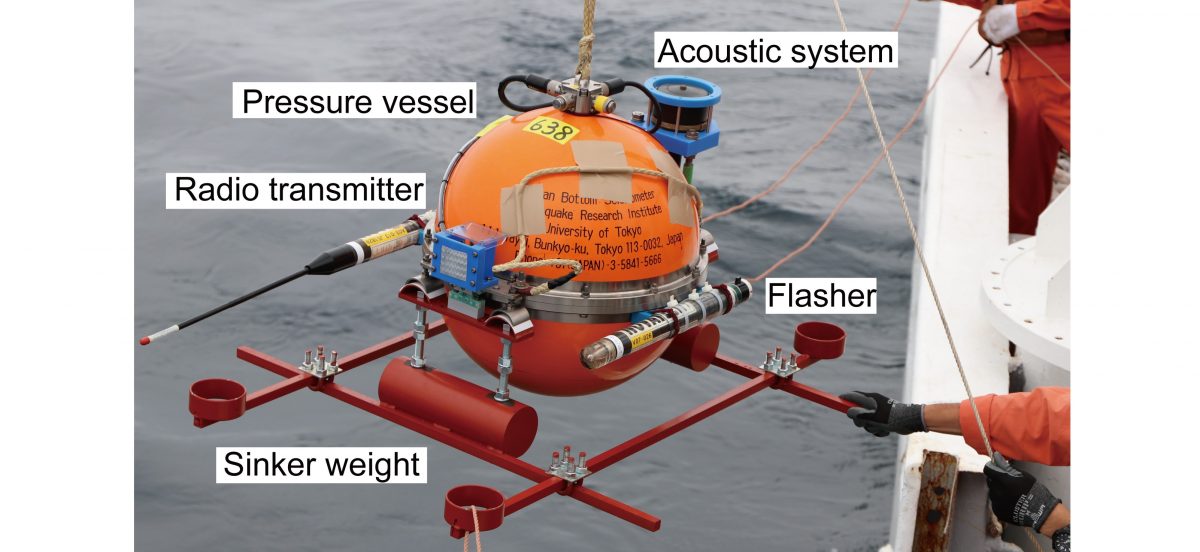Masanao Shinohara, Tomoaki Yamada, Hajime Shiobara, and Yusuke Yamashita (MiyazakiObservatory, Disaster Prevention Research Institute, Kyoto University)
Seismological Research Letters, https://doi.org/10.1785/0220210100
Studies of very-low-frequency earthquakes and low-frequency tremors (slow earthquakes) in the shallow region of plate boundaries need seafloor broadband seismic observations. Because it is expected that seafloor spatially high-density monitoring requires numerous broadband sensors for slow earthquakes near trenches, we have developed a long-term compact broadband ocean-bottom seismometer (CBBOBS) by upgrading the long-term short-period ocean-bottom seismometer that has seismic sensors with a natural frequency of 1 Hz and is being mainly used for observation of microearthquakes. Because many long-term ocean-bottom seismometers with short-period sensors are available, we can increase the number of broadband seafloor sensors at a low cost. A short-period seismometer is exchanged for a compact broadband seismometer with a period of 20 or 120 s. Because the ocean-bottom seismometers are installed by free fall, we have no attitude control during an installation. Therefore, we have developed a new leveling system for compact broadband seismic sensors. This new leveling system keeps the same dimensions as the conventional leveling system for 1 Hz seismometers so that the broadband seismic sensor can be installed conveniently. Tolerance for leveling is less than 1°. A tilt of up to 20° is allowed for the leveling operation. A microprocessor controls the leveling procedure. Some of the newly developed ocean-bottom seismometers were deployed in the western Nankai trough, where slow earthquakes frequently occur. The data from the ocean-bottom seismometers on the seafloor were evaluated, and we confirmed that the long-term CBBOBS is suitable for observation of slow earthquakes. The developed ocean-bottom seismometer is also available for submarine volcanic observation and broadband seafloor observation to estimate deep seismic structures.
Figure caption
Photograph of the LTOBS just before deployment. A sinker weight is attached to a spherical pressure capsule with a diameter of 50 cm. Radio transmitter and flasher aid discovery on the sea surface during recovery. The acoustic system has the function of communication between the sea surface and the LTOBS on the seafloor. The CBBOBS has an identical structure and appearance.


